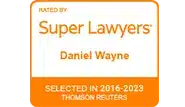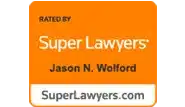Rent Board
San Francisco Rent Board Attorneys
The Rent Board interprets and enforces San Francisco’s Rent Ordinance. The Rent Board provides a number of resources to landlords and tenants including counseling and mediation services.
Many landlord-tenant disputes can be resolved through mediation or arbitration at the San Francisco Rent Board. This can help the parties involved avoid lengthy and costly court battles, particularly for smaller issues.

over
35
years of experience in representing tenants.
What is the San Francisco Rent Board?
The San Francisco Rent Board provides many types of services including investigations of evictions, conducting hearings, tenant petitions, and more. Learn more below. Contact our attorneys if you need help.
Rent Board Services
The San Francisco Rent Board provides three primary services to landlords and tenants:
- Conducting hearings and mediations of tenant and landlord petitions;
- Investigation of Reports of Alleged Wrongful Evictions;
- Provide counseling to tenants on subjects covered by the San Francisco Rent Ordinance.
Landlord Petition for 1.21 Rent Increase Denied
Tenant Petition for Unlawful Rent Increase Granted
Landlord Petition for Costa Hawkins Rent Increase Denied
Landlord Petition for 1.21 Rent Increase Denied
Landlord Petition for 1.21 Rent Increase Denied
Defeated an attempt to raise our client’s rent by $1,200 per month on the basis it was no longer her principal place of residence. At a hearing at the San Francisco Rent Board we were able to prove it was in fact her home, and obtained a decision in her favor.
Tenant Petition for Unlawful Rent Increase Granted
Obtained a decision in favor of our tenant clients at the San Francisco Rent Board after their landlord attempted to illegally increase their rent by $2,500 per month.
Landlord Petition for Costa Hawkins Rent Increase Denied
Defeated an attempt to quadruple our client’s rent on a claim that he was no longer living in his long-term apartment at a hearing at the San Francisco Rent Board.
Landlord Petition for 1.21 Rent Increase Denied
Defeated attempt to raise our client’s rent from $1,300 to $4,200 per month, allowing our clients to be able to remain in their home.
Tenant Petitions
Tenants can file petitions for the following issues:
Landlord Petitions
Landlords can also file petitions against their tenants at the Rent Board. The most common relate to rent increases for:
The Process
Because, in some cases, you may have claims that give rise to a potential lawsuit, it is always a good idea to discuss your situation with a tenant attorney or tenant counselor at one of the many non-profit housing organizations such as the SF Tenants Union or Housing Rights Committee as a first step. Likewise, if you receive notice from the Rent Board that your landlord has filed a petition against you, we recommend speaking to someone to get a better understanding of what you are dealing with and its legitimacy.
Filing a Petition
Once you have determined you have an issue appropriate for the Rent Board the first step is to file your petition. Petition Forms are available on the Rent Board website. Whether to retain an attorney or represent yourself is a matter of preference as the Rent Board does not require that you be represented by counsel. The process and hearings are more informal than going to court. Most landlords choose to be represented by an attorney, so tenants might consider securing representation in order to “even the playing field.”
From there, It often takes weeks for the Rent Board to schedule the hearing date. Therefore, for issues like improper rent increases, it is always important to file your petition as soon as possible to ensure you get a decision as quickly as possible.
Responding to a Petition
Regardless of the nature of your landlord’s petition, you will have the opportunity to show up on the date of the hearing to challenge your landlord’s proposed action. Be careful to keep an eye on the mail for notice of the hearing date.
Once a date is set by the Rent Board you will receive notice in the mail. The hearings take place at the Rent Board, 25 Van Ness, and are scheduled for a half-day – either for morning or afternoon and are presided over by an assigned Administrative Law Judge.
Mediation (Alternative Dispute Resolution)
Alternately, your case might be assigned to mediation. What’s the difference? Rather than issuing a decision, the Administrative Judge will work with you and your landlord to help you come up with your own solution to the conflict.
Because the parties are forced to work together, mediation can be a useful tool in restoring damaged relationships and encouraging the parties to communicate fruitfully. Also, mediation can be more efficient: because there’s no possibility for appeal, the agreement reached during mediation is final. If the parties can’t come to an agreement, their case may be scheduled for arbitration following their unsuccessful mediation. Note that mediation is commonly used for resolving decrease in services petitions but would not be appropriate in an illegal rent increase determination.
Arbitration
Depending on the nature of your petition your case will be assigned to either arbitration or mediation. In an arbitration, similar to being in Court, the parties each get an opportunity to present evidence supporting their position, including testimony from witnesses and the submission of supporting documents. Afterward the Administrative Judge will consider the facts and issue a written decision. Typically the decision will be issued anywhere from 4 – 8 weeks after the hearing. After the hearing, the judge’s written decision will be mailed to all parties. If neither party appeals this ruling becomes binding.
Tenant Petitions: Decrease in Services Petitions
The San Francisco Rent Ordinance prohibits a landlord from taking away any services without a corresponding reduction in base rent. This means that tenants have the right to continued use of all amenities that were included with the unit at the beginning of their occupancy– including parking, laundry facilities, storage, utilities, or access to a yard or patio. It also means that tenants have a right to amenities that are “reasonably expected” (such as proper light and heat), those that were promised by the landlord but never provided, and those that were added at some time after the beginning of the tenancy in exchange for increased rent.
Petitions for Decreases in Services can also include requests for a rent reduction for a landlord’s failure to maintain the premises, such as a landlord’s failure to provide a habitable premise including mold/mildew, water intrusion, or any other unlivable condition. However, if you are experiencing a severe habitability issue that your landlord has refused to fix, you may have better options for pursuing damages against your landlord, including a potential lawsuit. If you find yourself dealing with a longstanding and severe habitability issue, it is important to discuss the situation with a qualified attorney to assess the best course of action before filing / settling a petition of this kind at the Rent Board as you may be entitled to substantially higher damages than the Rent Board may provide.
Tenants who believe that their landlord has decreased services without a corresponding decrease in rent may file a “Substantial Decrease in Housing Services” petition. If the Rent Board rules in the tenant’s favor following a hearing, the tenant may receive a retroactive reduction in base rent and a reduction in rent going forward until such time as the services are restored. While the Rent Board cannot order a landlord to restore the service often a reduction in rent will incentivize a landlord to modify their behavior.
To discuss whether a Decrease in Services petition may be a good option for you, contact us today.
Unlawful Rent Increase Petitions and Lawful Rent Determinations
For those rental units covered by rent control, landlords are severely restricted in how much they can increase rent in a given year. If a landlord attempts to increase your rent beyond the annual allowable amount, a tenant can file a petition with the Rent Board challenging the rent increase. This comes into play in particular when a landlord has asserted that a unit is not subject to rent control, or has called into question whether an original occupant still resides in the unit. An Administrative Law Judge will review the rent history of your tenancy and/or evaluate the history of the building to determine the proper rental amount and thereafter issue a ruling.
Subtenant Petitions
Subtenants — that is, tenants who pay rent to the master tenant and who don’t have an independent relationship with the property owner — can submit petitions with the Rent Board against their master tenants. (In such cases, the master tenant is considered the subtenant’s “landlord.”)
The most common cause for a subtenant petition is disproportional rent payment. Under San Francisco law, a master tenant is not permitted to charge any subtenant more than a proportional share of the rent owed to the property owner. A tenant’s share of the rent is usually determined by square footage, but amenities such as views or private bathrooms may also be considered, as well as other services, such as utilities or furnishings, provided by the master tenant.
In addition to disproportional rent payments, subtenants may consider turning to the Rent Board if their master tenants fail to make repairs or takes away services.
Landlord Petitions Section 1.21 “Tenant in Occupancy” Petitions
In California, if a rent-controlled tenant no longer uses the unit as their primary place of residence, the landlord may increase the rent to market rate. This process is sometimes called “vacancy de-control,” and is made possible by the 1999 state law known as Costa Hawkins, which counteracted some of the “strong” rent-control measures previously put in place by cities like Berkeley and SF.
In San Francisco, landlords who want to raise the rent of a tenant must first receive permission from the Rent Board. If the landlord suspects the tenant is no longer “in occupancy,” they file what’s called a 1.21 Petition with the Rent Board.
To fight this type of petition, a tenant may submit evidence that the unit is, in fact, their principal place of residence, such as voter or DMV registration, utility bills, and declarations from friends or neighbors. After a hearing, a judge will determine the validity of the landlord’s claims.
Costa Hawkins and Section 6.14 Petitions
In California, a landlord is permitted to levy unregulated rent increases whenever a unit becomes vacant. This process is sometimes called “vacancy de-control,” and is made possible by the 1999 state law known as Costa Hawkins, which counteracted some of the “strong” rent-control measures previously put in place by cities like Berkeley and SF. In San Francisco, vacancy de-control is also regulated by city ordinance §6.14.
Basically, these laws allow landlords to raise the rent to market rate when the “original occupants” no longer live in the unit. That is, if your roommate has lived in the place for ten years and you’ve only lived there for one, you might be at risk of a rent increase if your roommate moves out.
To raise the rent legally, the landlord must file a “Petition for a Determination Pursuant to the Section 6.14 and/or Costa-Hawkins Rental Housing Act” with the Rent Board. A judge will hear evidence presented by the landlord and the tenant and issue a ruling on whether the current tenants are entitled to continued rent control.
If you’re a tenant who’s received notice of this type of petition, it’s not a lost cause. Depending on your relationship with the landlord, the length of your tenancy, and other factors, you may still have a right to rent control. A tenant’s attorney can advise you on the validity of the landlord’s petition, and possibly represent you at the Rent Board.
Capital Improvement / Operation and Maintenance and Bond Passthroughs
Landlords may seek Rent Board approval for certain types of rent increases. These are generally called “passthroughs,” since they represent landlords passing the expenses of property ownership on to renters.
The most common types of passthroughs are 1. Capital Improvements passthrough, 2. Operating and Maintenance Expense Increase, and 3. Utility Passthroughs. All of these rent increases have very specific guidelines for implementation. Tenants who suspect their passthroughs were miscalculated, or erroneously approved, should speak to a tenants’ attorney or Rent Board staff. Note that these types of passthroughs are invalid without prior approval from the Rent Board. If your landlord attempts to levy such a rent increase without providing evidence of Rent Board approval, you can contest it, or simply decline to pay until approval is granted.
Two additional types of passthroughs — general obligation bond measure passthroughs and water revenue bond passthroughs — do NOT require prior approval from the Rent Board. However, landlords are required to provide worksheets from the Rent Board that show the calculations for the increases.
Tenants can submit their own petitions to the Rent Board challenging improper passthroughs and rent increases. Tenants can also plead financial hardship in order to defer such increases.
Get Started
For more information or to discuss your legal situation, call us today at (415) 649-6203 for a phone consultation or submit an inquiry below. Please note our firm can only assist tenants residing in San Francisco, Oakland & Berkeley.














